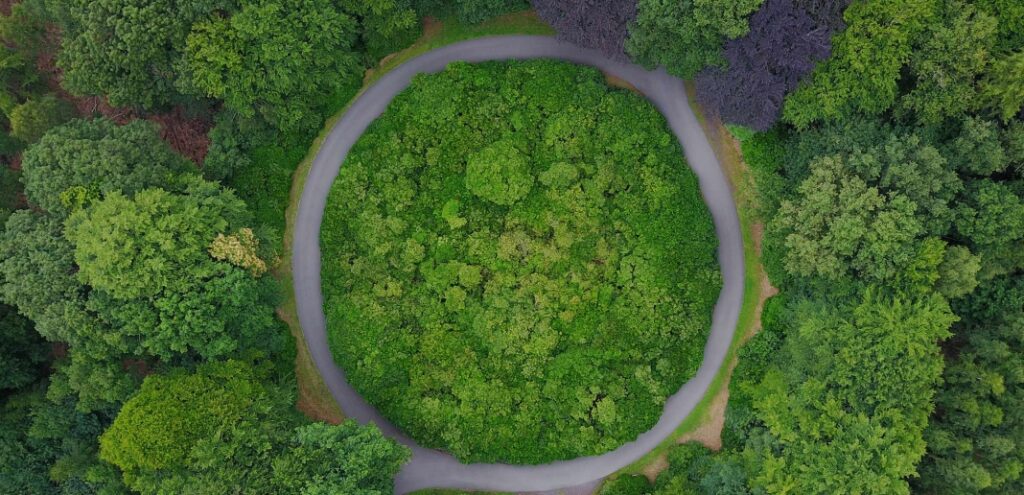Rotorua and the wider Bay of Plenty region is hard to beat when it comes to forestry. It would be fair to say it’s in our genes, and part of our identity. With a strong history and legacy in forestry and wood processing, it’s no surprise that Rotorua, alongside our neighbouring districts will be at the heart of New Zealand’s emerging circular bioeconomy.
We are in a great starting position. Besides being centrally located in the North Island, extensive transportation infrastructure and robust support services have given Rotorua a sustainable competitive advantage. Not to mention we are also home to the largest forest plantation in the southern hemisphere.
The strong ties maintained through working partnerships with Scion, Red Stag Timber, and New Zealand Institute of Skills and Technology subsidiary Toi Ohomai Institute of Technology (Toi Ohomai) have helped to strengthen the city’s establishment as an industry leader.
So, what is a circular bioeconomy, and why is it important?
From a global perspective, we know that our dependency on oil and gas is going to transform over the next decade and the replacement of oil and gas with biological alternatives will be at the centre of this transformation.
A circular bioeconomy is essentially an economy that is powered by nature. It is a new economic model that emphasises the use of renewable natural capital and focuses on minimising waste, replacing the wide range of non-renewable, fossil-based products currently in use. An economy that relies on renewable natural resources to produce food, energy, products, and services.
The bioeconomy and the bio-innovation that drives it, are highly placed-based phenomena and relevant to our regions. This provides a significant future opportunity for regional development and for Māori. Key regions having significant competitive advantages such as the Bay of Plenty in woody biomass, and Māori who own over 40% of the forests in New Zealand, are positioned to reap the benefits of the circular bio-economy, with benefits flowing through to whānau, iwi and hapū through investment, and higher wage skilled jobs.
There is also a large and growing global addressable market for bio-innovation use-cases across many segments. Fibres and materials, fuels, energy, bioplastics are all growing in demand both here in New Zealand and across the globe.

What are the opportunities? What we are trying to achieve?
Despite a lack of data on feedstock end use product demand in New Zealand, there is clear consumer intent around bio/green/sustainable products. New Zealand has traditionally focused on primary production outputs but with a circular bioeconomy there is significant opportunities for ‘new industry secondary processing’ for both domestic (replacing carbon/petro intensive industrial inputs) and export markets.
The Bay of Plenty region is blessed with a LOT of biomass. We are fortunate to have not only extensive forestry resources but growing horticulture and aquaculture sectors that will generate increasing biomass quantities over the coming decade.
In addition to biomass, we also have the expertise to understand what the critical ingredients are to unlock value for NZ Inc., whilst also providing global solutions to decarbonisation. Over the past twelve months we’ve worked alongside Scion and Te Uru Rākau New Zealand Forestry Service to look at how we can create new industries across Rotorua and neighbouring regions that will support the production of bioplastics, liquid biofuels and biochemicals.
The outcomes of a circular bio-economy for New Zealand include GDP growth, productivity, decarbonisation across industry and energy, lower ‘green premiums’, specialised exports at scale and increased innovation outputs. For the regions it will mean an increase in skills and jobs and support for Māori economic aspirations. Re-industrialising our regions is a very real possibility and Rotorua and the wider Bay of Plenty is well positioned to be at the forefront of this transformation.
What can we do and what gap are we trying to fill?
Our bioeconomy will require the development of new products, operating models and services, driven by continued research and innovation across both the public and private sectors. Additional investment in establishing a strong bio-innovation network will be critical and will bring together circular bio-innovation focused people, institutes and companies, with appropriate feedstocks, capabilities and infrastructure (in some places shared).
Looking across New Zealand, it is realistic to imagine individual regional clusters (forestry, aquaculture, agriculture, horticulture, waste, etc.) being established. These would involve a collaboration of key stakeholders (customers, R&D, feedstock owners, Māori, investors, funders) to address and deliver end to end opportunities of the feedstock value.
It is no secret that New Zealand has strong research and development capabilities in the bio-innovation domain. Unfortunately, there is a major gap in scale up facilities and commercialisation causing a disconnect between research push and market pull. Because we have limited facilities in NZ, scale up often needs to occur offshore or in multiple subscale facilities, which means much of our cutting-edge research never progresses to market at scale.
The gap at the scale-up and commercialisation stage is not new for New Zealand’s innovation system, but is one that must be overcome if we are committed to increasing value-added manufacturing within our shores. Fortunately, it is a challenge New Zealand has previously addressed, the New Zealand Food Innovation Network being a prime example. Across the networks five open access food and beverage production facilities, businesses can scale up and commercialise new products. From research and development, through to manufacturing, the government funded network provides a unique level of expertise and access to a diverse suite of manufacturing equipment.
A similar Government investment in scale-up and commercialisation facilities for the bioeconomy is required to capitalise on the enormous opportunity that is presented to us. Investment not only will contribute our transition to a low carbon economy, but has the potential to unlock jobs and Māori economic aspirations.




